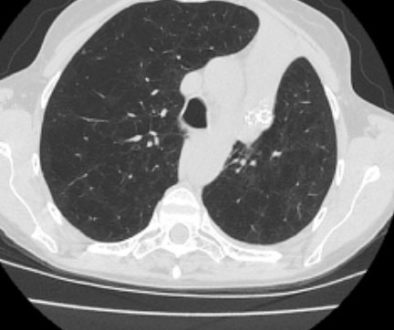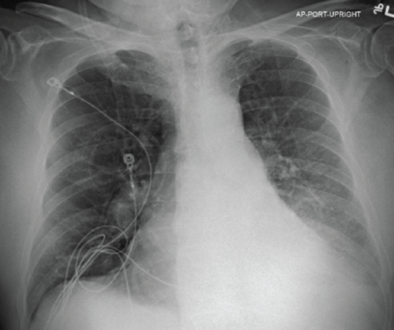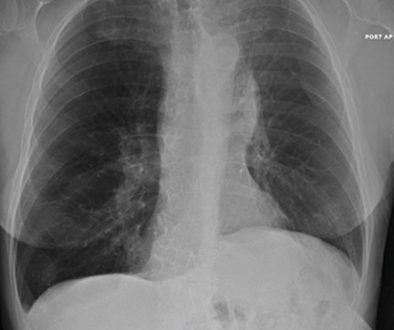Clinical Spotlight:
74-year-old male with modest improvement in PFTs, able to walk more and sleep better
| Patient Profile | ||
|---|---|---|
| Quality of Life Goal | Be able to walk a golf course with multiple stops, take trash to the end of steep driveway without difficulty, sleep better | |
| Condition |
|
|
| Smoking History |
|
|
| Management Medications |
|
|
| Oxygen Use |
|
|
| Baseline FEV1 |
|
|
| Symptoms |
|
|
Procedure Details:
-
Had pulmonary rehab prior to treatment
-
StratX®report showed 100% complete fissure on the left side and 56% destruction in the target lobe (Left Lower Lobe)
-
Collateral ventilation negative by Chartis®Pulmonary Assessment System
-
Five Zephyr Valves placed in left lower lobe (LLL)
-
Three-night hospitalization prior to discharge
Pre and Post-Imaging:
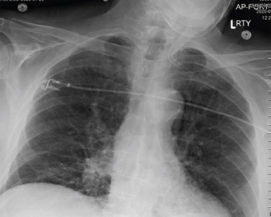
Pre-procedure

Post-procedure
Pre and Post Lung Function Chart:
| ASSESSMENT | PRE-PROCEDURE | POST-PROCEDURE (3 MONTHS) |
|---|---|---|
| FEV1 | 1390 mL | 1460 mL |
| FEV1 (% pred) | 48% | 52% |
| RV | 4530 mL | 4080 mL |
| RV (% pred) | 172% | 156% |
| TLC | 124% | 108% |
| 6MWD | 527 m | 554 m |
Case was Completed by:
Dr. Amit ”Bobby” Mahajan at Inova Fairfax Hospital, Fairfax, VA
Patient was Referred by:
Dr. Adlah Sukkar, MD, Pulmonologist
Patient Outcome:
-
No oxygen use changes
-
No hospitalizations since treatment
-
Walking three to five miles a day now and can walk 23-minute mile
-
Sleeping better
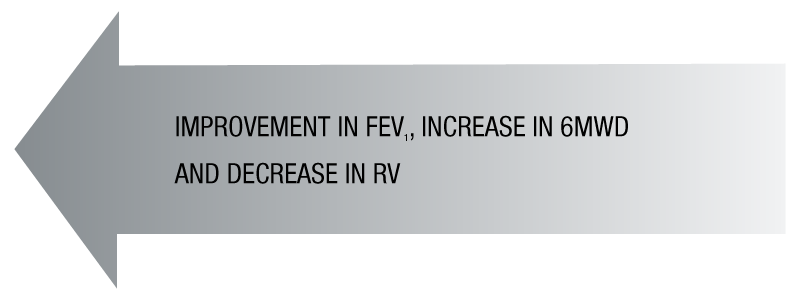
How the Zephyr Valve Works:
The Zephyr Valve is a one-way valve designed to reduce hyperinflation of the lungs caused by severe emphysema/COPD. In a minimally invasive bronchoscopic procedure, an average of four tiny valves are placed in the airways to block off the diseased parts of the lungs where air gets trapped, causing hyperinflation and severe shortness of breath. The Zephyr Valve reduces lung hyperinflation by allowing trapped air to escape and preventing new air from entering that diseased lobe. This allows the healthier parts of the lung to function better and results in patients being able to breathe more easily and experience less shortness of breath.¹
The Zephyr Endobronchial Valve is removable, and thus preserves future therapy options.
If you have a patient to refer, find a treatment center in your area.
Zephyr Valve Patient Benefits and Risks:
Patients treated report significant improvements in lung function, exercise tolerance, and quality of life.1
Complications of the Zephyr Endobronchial Valve treatment can include but are not limited to pneumothorax, worsening of COPD symptoms, hemoptysis, pneumonia, dyspnea and, in rare cases, death.
Results from clinical spotlights are not necessarily predictive of results in other cases. Results in other cases may vary.

